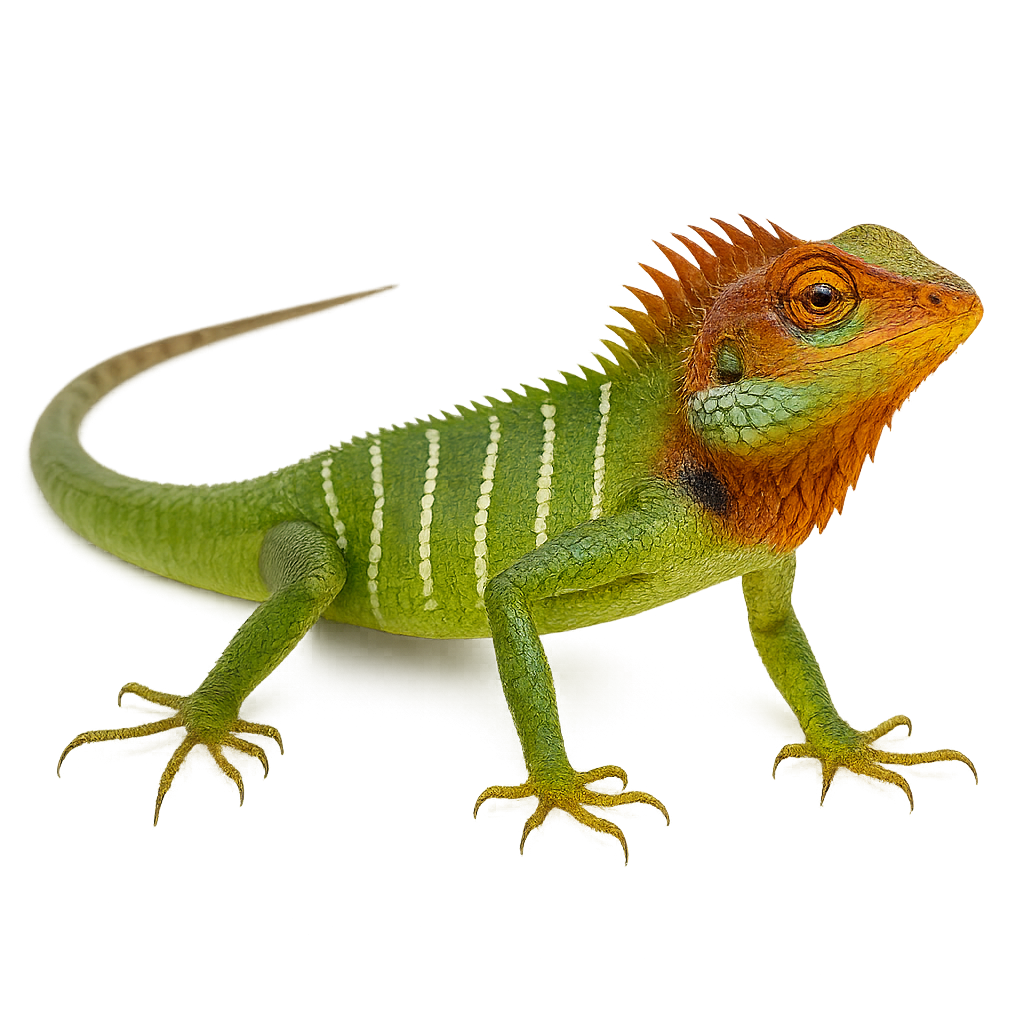Your wildlife photography guide.
Explore the common green forest lizard in detail, study its behavior, prepare your shots.
Where to observe and photograph the common green forest lizard in the wild
Learn where and when to spot the common green forest lizard in the wild, how to identify the species based on distinctive features, and what natural environments it inhabits. The WildlifePhotographer app offers tailored photography tips that reflect the common green forest lizard’s behavior, helping you capture better wildlife images. Explore the full species profile for key information including description, habitat, active periods, and approach techniques.
Common Green Forest Lizard
Scientific name: Calotes calotes

IUCN Status: Least Concern
Family: AGAMIDAE
Group: Reptiles
Sensitivity to human approach: Tolerant
Minimum approach distance: 3 m
Reproduction period: May to June
Incubation: N/A
Births: July to August
Habitat:
forests, gardens, wooded areas
Activity period :
Active during the day when temperatures are favorable, often seen basking in the sun.
Identification and description:
The Common Green Forest Lizard, Calotes calotes, is an arboreal lizard native to Sri Lanka and southern India. It is recognizable by its bright green color, although its hue can vary depending on its environment and mood. Males often display a more pronounced dorsal crest and brighter colors than females, especially during the breeding season. This diurnal lizard primarily feeds on insects but can also consume fruits and small vertebrates. It is often seen in gardens, forests, and wooded areas, where it skillfully camouflages among the foliage.
Recommended lens:
Macro – adjust based on distance, desired framing (portrait or habitat), and approach conditions.
Photography tips:
To photograph the Common Green Forest Lizard, choose early morning or late afternoon when the light is soft. Use a macro lens to capture the details of its skin and vibrant colors. Approach slowly to avoid startling it and maintain a distance of at least 3 m. A tripod can be helpful to stabilize your camera, especially if using a slow shutter speed. Be patient and wait for it to perch on a branch or trunk to get a sharp and well-composed shot.
From knowledge to field practice
A species profile helps you understand an animal. In the field, the challenge is often different. Remembering your own observations.
The WildlifePhotographer app allows you to:
• record your personal observations
• note locations, dates, and behaviors
• revisit your field references over time
• build a private and long-term field logbook
The app does not provide observation locations.
It helps you organize what you actually observe, with respect for wildlife.

